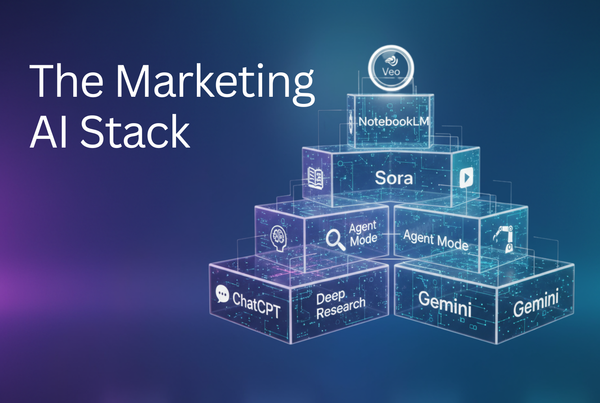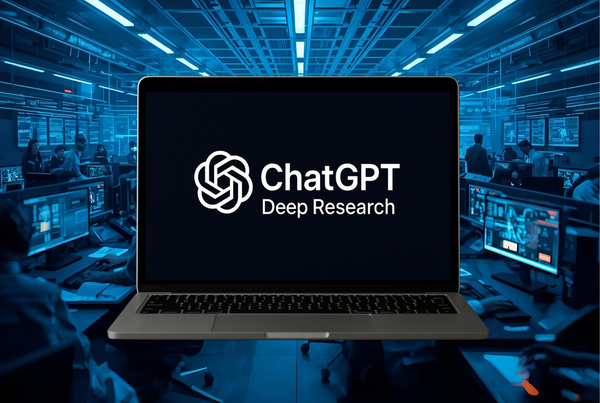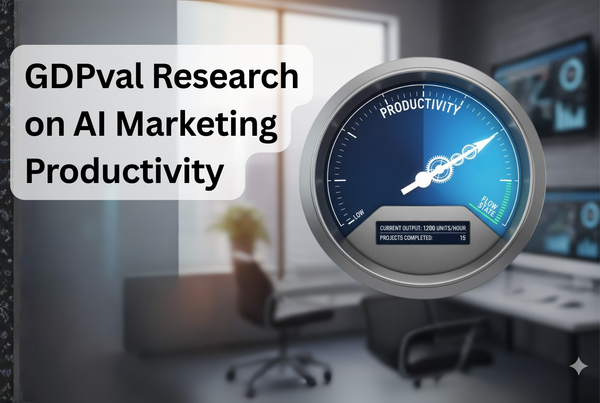5 Things Marketers Need to Know About ChatGPT-5
After a week with ChatGPT 5, here are 5 things marketers need to know.

ChatGPT-5 has now been in the hands of marketers for a week, and the early verdict is in: it’s a meaningful step forward — not just in raw capability, but in how adaptable it feels across creative, analytical, and strategic work.
Here’s a round-up of what industry experts are saying, what’s different from GPT-4, and how marketers can put these changes to work.
1. Writes Better and Faster, With More Accuracy
Marketers are finding GPT-5 delivers cleaner, more natural writing that requires fewer rewrites. Compared to GPT-4o, hallucinations are down by 4–10x, depending on the task, making it more reliable for fact-based work (Backlinko).
For B2B marketers, that means you can drop in a niche request — say, a 1,000-word thought-leadership article or a technical SEO brief — and get a structured, audience-ready draft in minutes (The B2B Marketer). The reduction in back-and-forth refinement speeds up campaign timelines and makes ChatGPT-5 a stronger “first-draft partner” than its predecessors.
Structure your prompts with clarity and include the output format you want. GPT-5 rewards clean instructions and organized headings (TechWyse).
2. Better Memory for Multi-Layered Projects
With GPT-5, memory is no longer just about remembering a few lines back in a conversation — it can now keep hundreds of thousands of tokens in play at once. That’s enough to hold your full campaign brief, last year’s analytics export, a competitor’s product brochure, and a running brainstorm all in the same working context (Matthew J Pyke).
For marketers, this makes it a genuine partner for long-running, multi-stakeholder projects. You can feed it a 50-page market research report on Monday, revisit the conversation on Thursday, and still have it recall key trends, quotes, and data without re-uploading or re-explaining. That means less time resetting the AI and more time pushing the work forward. It also opens the door to richer analysis — for example, asking it to cross-reference competitor messaging against your own content strategy to spot opportunities or gaps.
3. Deeper Thinking — If You Ask for It
One of GPT-5’s biggest leaps isn’t always obvious at first: its ability to shift gears between “fast answers” and “deep reasoning” based on your request. For simple, transactional tasks, it delivers responses almost instantly. But for complex challenges — like mapping a multi-channel campaign or analysing nuanced audience insights — it automatically engages a more deliberate thought process (Lisa Peyton, Marketing AI Institute).
Marketers can take advantage of this by prompting it explicitly:
“Think hard about this before you answer.”
Ethan Mollick’s early experiments showed that with a single prompt, GPT-5 could not only brainstorm startup ideas but also produce landing pages, ad copy, basic financial projections, and related assets — the kind of package a human team might take hours to assemble. The lesson: if you want strategic depth, ask for it, and give GPT-5 the space to work through the problem.
4. A New Reasoning Model for Complex Marketing Work
The new “reasoning” model in GPT-5 is designed to break problems into smaller, logical steps before delivering an answer. This makes it feel less like a text generator and more like a consultant walking you through their thinking. Sam Altman described it as “talking to a PhD-level expert” (Archive link).
For marketers, this structured thinking pays off when tackling knotty challenges. You can give it a messy dataset and ask it to find correlations, and it will surface patterns — such as which audience segments respond best to certain calls-to-action (Uplifted.ai). You can also run scenario analysis, build creative testing matrices, or request ROI projections for competing campaign concepts (Marketing AI Institute).
It’s not “thinking” in the human sense, but it is a leap in AI’s ability to tackle multi-step marketing problems with structure and clarity.
5. Personality Modes Can Cater to Your Needs
Alongside technical upgrades, GPT-5 introduced four personality modes that let you choose how the AI “shows up” in your conversation (Tom’s Guide): Cynic, Robot, Listener, and Nerd. These aren’t just cosmetic — they can subtly change how the model approaches your request.
- Cynic is sharp and opinionated, perfect for cutting through noise or brainstorming edgy creative angles.
- Robot is efficient and precise, ideal for technical documentation, troubleshooting, or compliance-heavy copy.
- Listener brings warmth and empathy, making it useful for customer comms or sensitive topics.
- Nerd dives deep into detail, great for educational content or complex topic breakdowns.
For marketers, personality modes can be a productivity hack. You might switch to Cynic for brainstorming contrarian headlines, then to Nerd for writing an in-depth whitepaper, and finally to Listener for drafting client emails. Each mode shifts the tone and, in some cases, the angle of problem-solving — without changing tools or contexts.
Takeaway for Marketers
GPT-5 is a sharper, more adaptive tool that rewards clear instructions, structured data, and creative experimentation.
- Lean on its memory for ongoing projects.
- Prompt deeper reasoning for strategy and analysis.
- Match personality modes to the task for better tone and output.
As Ethan Mollick put it: “GPT-5 just does stuff.” The real opportunity lies in knowing exactly what to ask for — and how to integrate its capabilities into your marketing stack.





